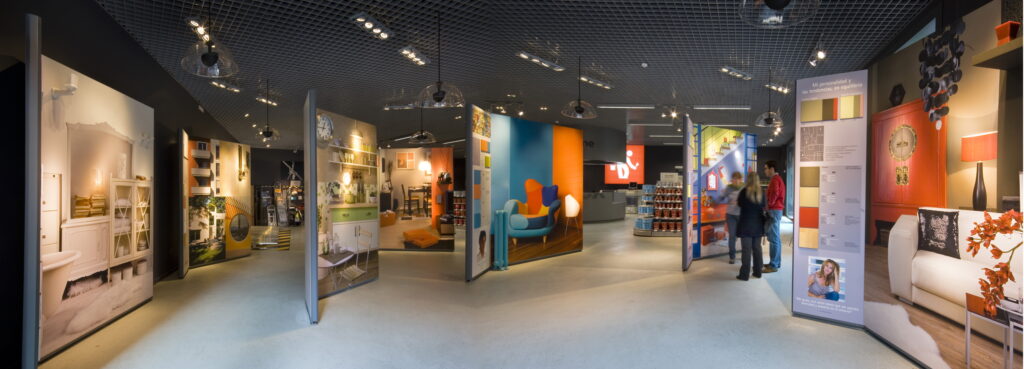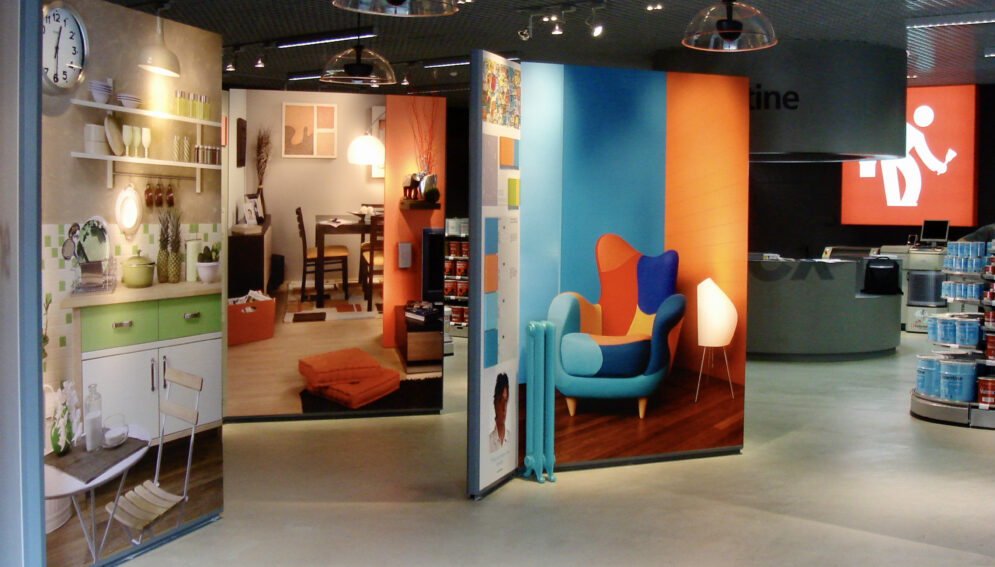
ABSTRACT
Selling directly to end customers allows controlling the entire purchasing process. This means you can create the perfect mix of commercial and marketing strategies to differentiate yourself and sell without restrictions. In addition, retailing allows companies to make branding by giving customers the chance to experience with their five senses what the brand means. Those firms entering retailing with an innovative business formula manage to stand out and avoid price wars.
____________
On December 9th, 2007 Valentine, the fastest growing firm in the Spanish paint industry, opened its pilot store in Lleida with a total surface area of 400 m2 located directly in the city centre, selling just paints.
Valetine is yet another company that decided to enter into retailing. It does so however with a sound strategic vision, and seeking the coexistence with its other sales channels: its Decocenter network and its independent distributors.
Valentine’s aim for being in retailing was not driven by a sheer desire to exhibit its huge product range, but rather by the wish to deliver really innovative solutions to its customers.
.
The store as an imagination machine
Rosa Franch, a specialist in market research and customer insights, conducted a qualitative study to understand what is really going through customers’ minds when they think of painting their homes.
She discovered that many people are frightened to paint their homes because they do not know much about design and worry about choosing the wrong colours. In case of doubt, they stick to plain white – the colour of fear – which represents less risk, but at the same time, less gratification.
Building on these customer insights, Valentine decided to opt for an innovative formula. It realised that offering potential customers thousands of possible colours (like its competitors do) would not be perceived as a better service. On the contrary; it would make customers only feel worse: more ignorant, more confused and more worried.
Instead, Valentine decided that its store should become a place to dream, because imagination is an essential part of purchasing products related to personal expression (clothes, accessories, decoration, furniture).

And it does so by appealing to all the senses: real-size photos projecting possible settings, possibilities to touch the real paint texture that is being proposed, and the reproduction of a suitable musical tone that “wraps” each scene.
.
The shop, a branding medium
This aligned multisensoriality on top of creating an excellent relationship with customers, achieves something of great value: the shop becomes the best method for branding.
Amancio Ortega, the chairman of Inditex, once said: “The shop is the way to create a brand”. The shop uses the five senses to express the brand sense, and it does so even if there are no posters hanging up or typical POS materials on display.
.
And with full control
Finally, everything is done the way it should be done: the price, the exhibition, the assortment, the experience, the services, the promotions… are all aligned and coherent with the brand sense and the overall marketing strategy of the company.
It is perhaps no coincidence that more and more companies want to move into retailing, and some look for innovative ways to do so.
These innovative companies are taking fewer risks because they differentiate themselves more from the competition, and can provide the market with something fresh, thereby avoiding traumatic price wars.
.
Lluis Martinez-Ribes
Source: Distribución Actualidad, the spanish magazine of retailing
(nº 394, September 2008)




